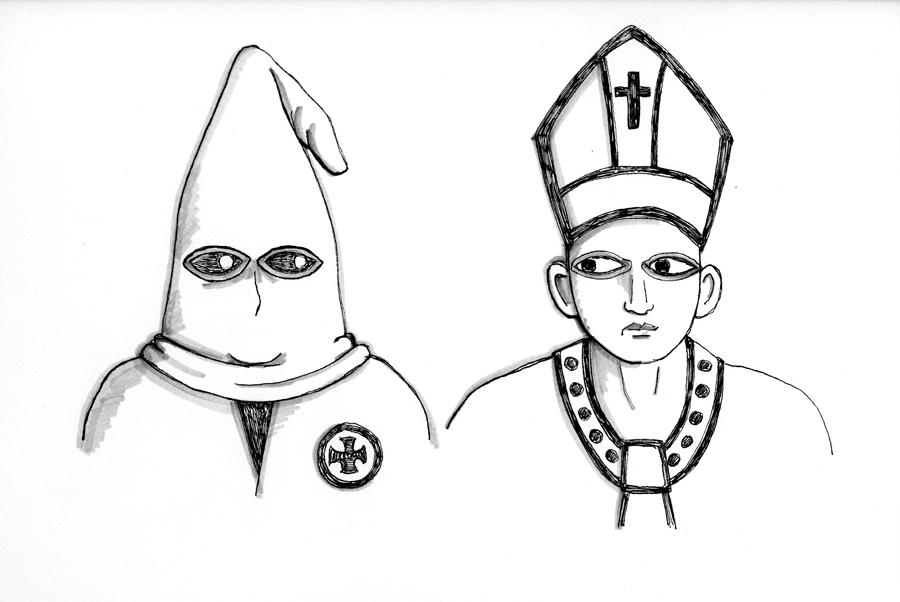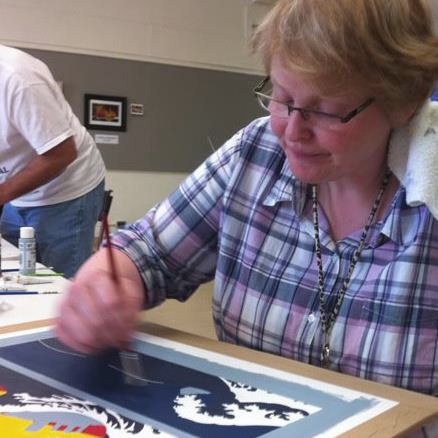Drawing the Canada-Wide Science Fair : Leila Armstrong
Drawing the Canada-Wide Science Fair is a collective of sixteen artists who have come together to interpret and play with the spectacle of a national science fair through visual language. By drawing on-site during the Canada-Wide Science Fair, the artists will create and immediately broadcast drawings of selected projects on display. The idea is to expand the notion of drawing around science themes to include the potentials of visual priority, cross-disciplinary work, collaborative drawing, multi-perspectival drawing, non-precious drawing, interactions with people, live tweeting, 5-second-delay blogging, and other unexpected possibilities. Here’s an introduction to Leila Armstrong, Canada-Wide Science Fair Artist.
Leila Armstrong loves dark chocolate and watches an inordinate amount of television. To justify these behaviors she acquired an M.A. in Media Studies from Concordia University. When able to tear herself away from re-runs of “Pee-Wee’s Playhouse,” she produces works inspired by her encounters with pop culture artifacts. For several years she was part of collaborate art duo 12 Point Buck. Since 2011, she has been working with Maria Madacky and Darcy Logan in M.E.D.I.U.M. (Metaphysical Explorations, Divinations, and Investigations Utilizing Magic) where she performs as trailer park psychic Char Latan. Check out her blog at http://leilaarmstrong.blogspot.com
What is your experience with science fairs?
When I was a child, we didn’t do science fairs. I was exposed to the concept via American television programming. To this day I think of them as something highly American, like big teeth, prom queens, and frat houses. It seems like something outside the Canadian identity. Something adopted through cultural influence.
The scientific method?
My background is primarily in qualitative methods. There’s this ludicrous notion that somehow quantitative research is rigorous, pure, and true in a way qualitative methodology never can be.
How does the scientific method compare with your method(s)?
I have infinite wiggle room. I don’t come up with a hypothesis and then test that hypothesis in a controlled manner. I come up with an idea, or even just a jumble of mental images, and then work them out. I often benefit from “Oops! Ah-ha!” moments.
How is drawing part of your practice?
I love to draw. No piece of paper has ever been safe in my presence. I regularly deface my own notes, office memos, paper napkins, and restaurant placemats. Making marks on paper is one the most satisfying activities.
Describe an experiment you’ve done.
In grade 11 or 12 biology, my lab partner and I wanted to see if goldfish could adapt to salt water. Over time we slowly added salt to the fish tank and watched for physical and behavioral shifts. All was fine at the beginning but eventually the goldfish turned white and then died.
Do you know any scientists? What are they like?
I have a cousin who has a PhD in biochemistry and my sister-in-law is a high school science teacher. I’m not sure they’re really much different than anybody else. Perhaps they’re a bit more controlling. I myself am a control freak, so who knows?
Do you know any high school students? What are they like?
High school students are concerned with being unique via total submission to social norms. At the same time, they’re trying to develop and define their own identities as separate from that of their parents and even their peers. It’s a tumultuous and exciting time.
How is risk a part of your practice?
I’m not afraid of failure. For me, the most important part of making work is the process. That’s what it’s all about.
How is interacting a part of your practice?
I love collaborating. The end product is always greater than the sum of its parts.
Got any good science jokes? art jokes? collaboration jokes?
I’ve developed a foolproof technique any of you can use to sculpt a model of an elephant: 1. Get a huge block of marble.
2. Chip away anything that doesn’t look like an elephant.
Can you describe what it’s like to work on something new / outside of your area / unfamiliar?
Intriguing.

